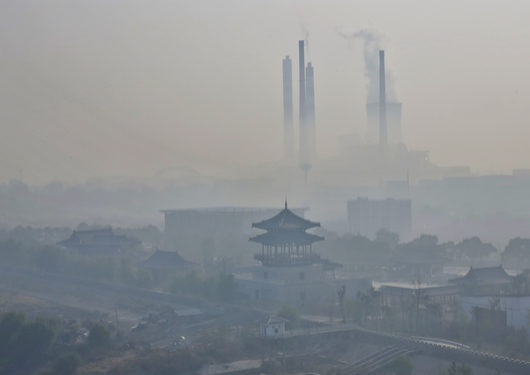
Visit Our Sponsors |
|
|
|
|
|
|
|
|
|
|
|
|
|
|
|
|
|
|
|
|
|
|
|
|
|
|
|
|
|
|
|
|
|
|
|
|
|
|

Four decades of breakneck economic growth turned China into the world’s biggest carbon emitter. But now the government is trying to change that without damaging the economy — and perhaps even use its green policies to become a leader in technological innovation. So, as lawmakers attend the annual National People’s Congress, here’s a look at the impact of the environmental focus, at home and abroad.
China’s air pollution is so extreme that in 2015, independent research group Berkeley Earth estimated it contributed to 1.6 million deaths per year in the country.
The smog is heaviest in northern industrial provinces such as Shanxi, the dominant coal mining region, and steel-producing Hebei. Emissions there contribute to the planet’s largest mass of PM 2.5 air pollution — the particles which pose the greatest health risks because they can become lodged in the lungs. It can stretch from Mongolia to the Yellow Sea and often as far as South Korea.
Leaders at the congress said they will raise spending to curb pollution by 19 percent over the previous year to 40.5bn yuan ($6.4bn) and aim to cut sulfur dioxide and nitrogen oxide emissions by 3 percent. They said heavy air pollution days in key cities are down 50 percent in five years.
RELATED CONTENT
RELATED VIDEOS
Timely, incisive articles delivered directly to your inbox.

